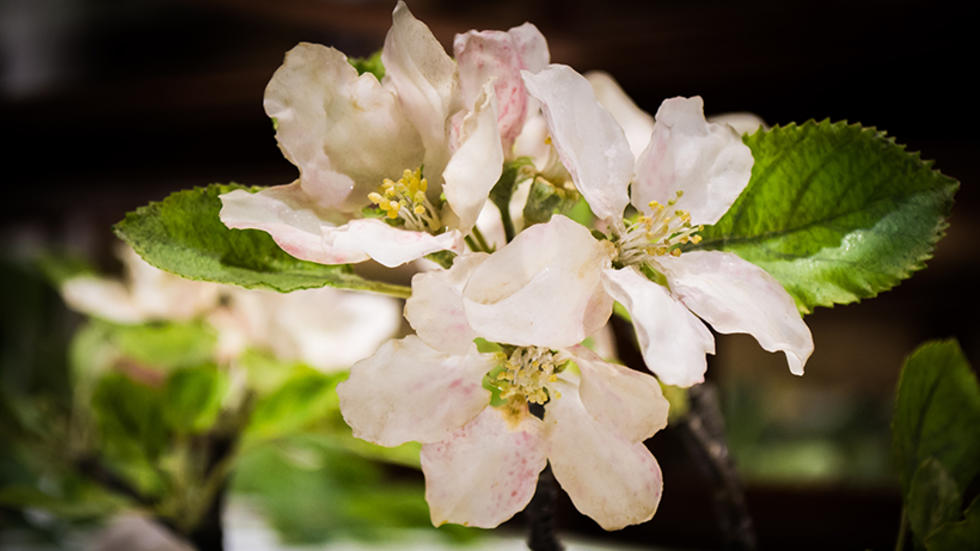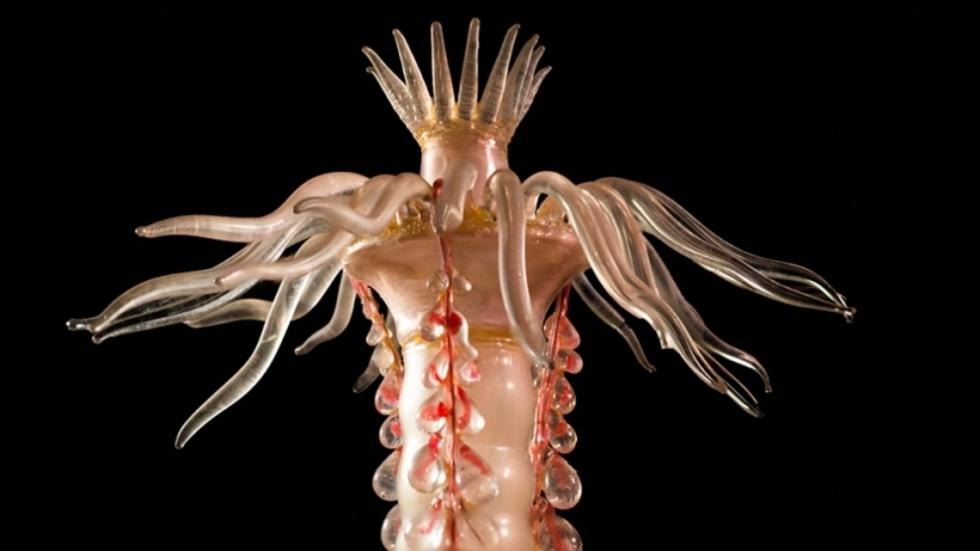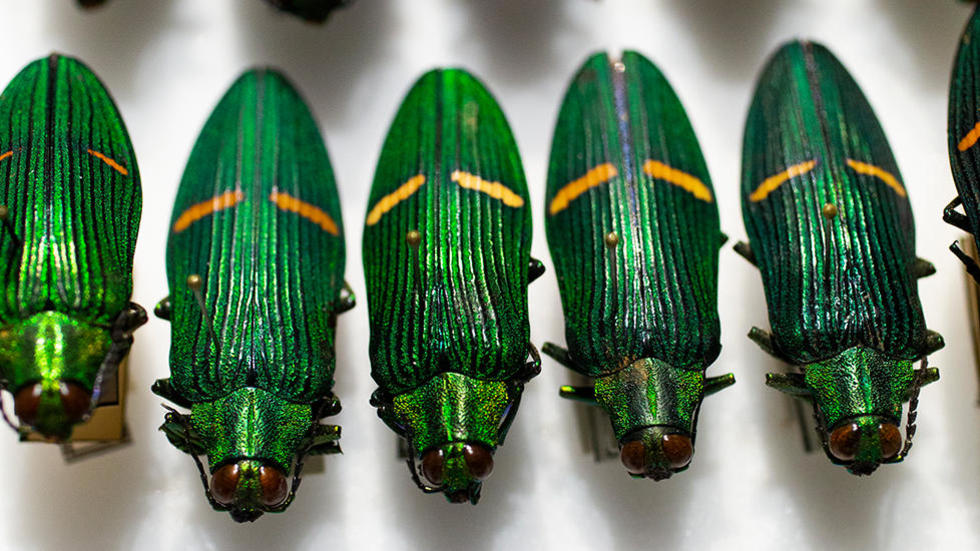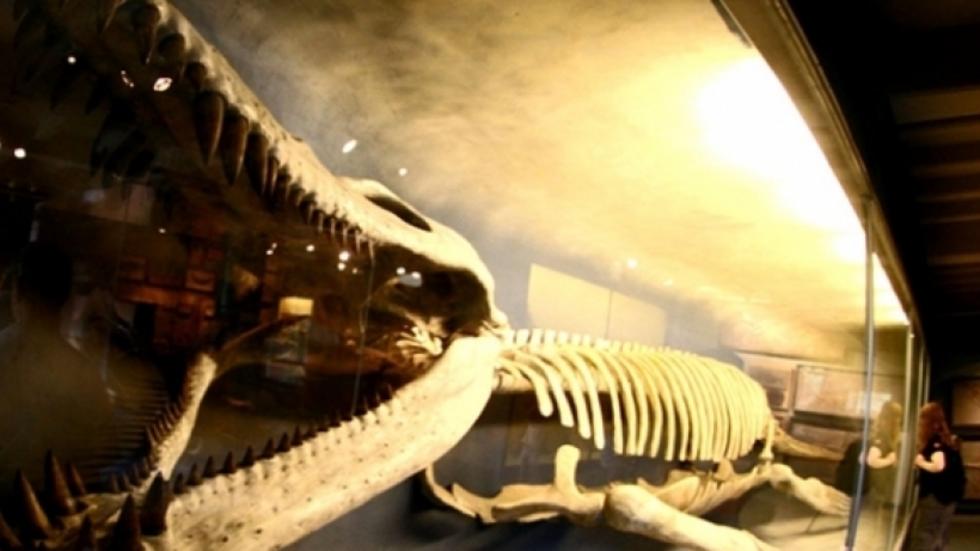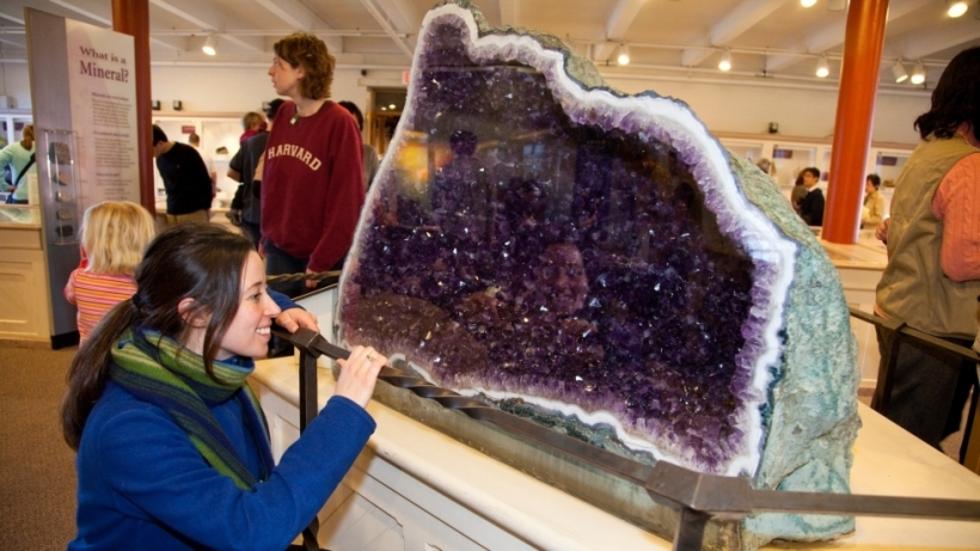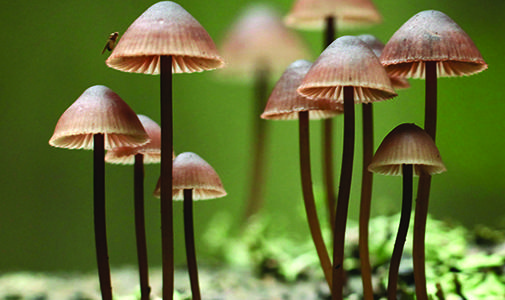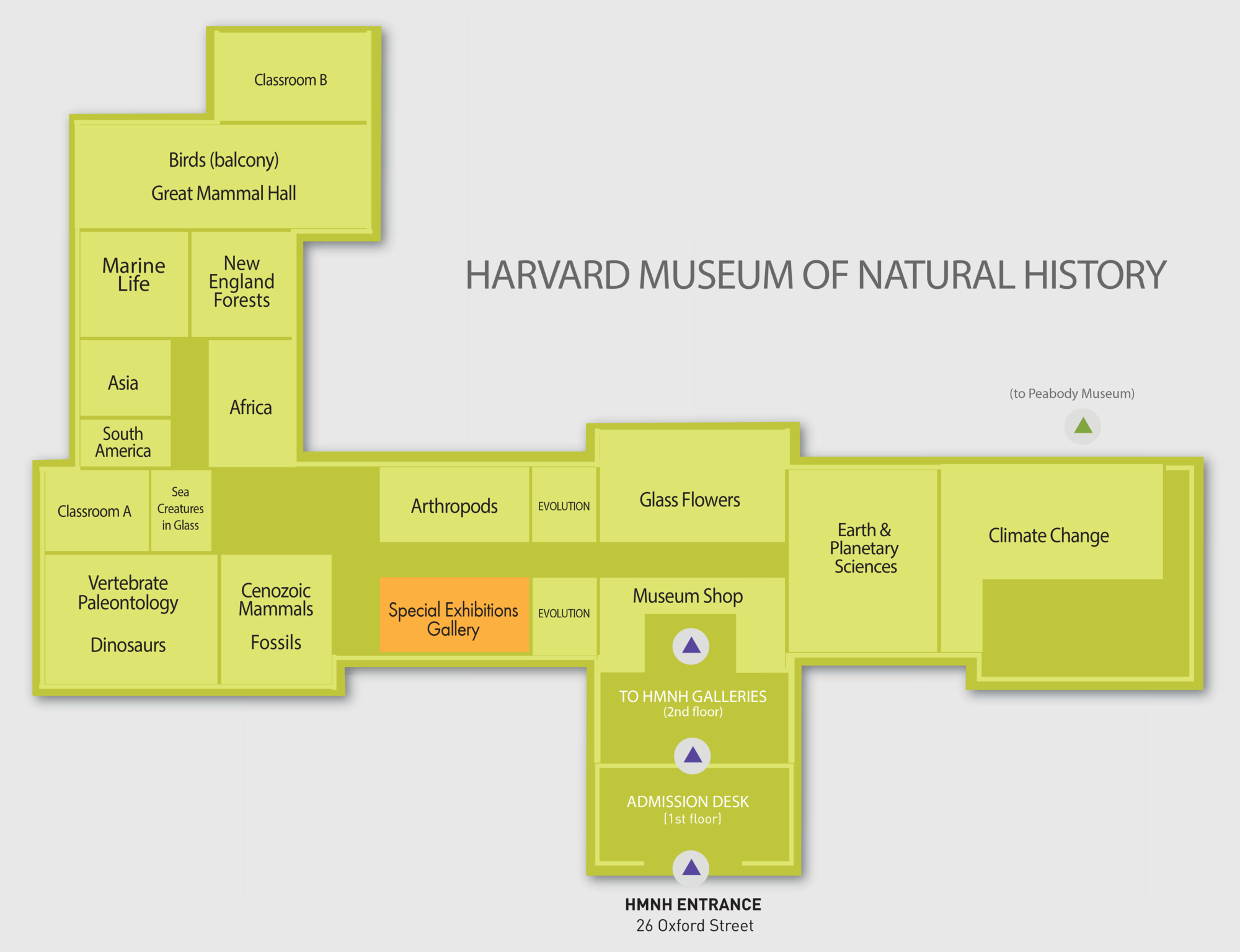Exhibitions
Africa
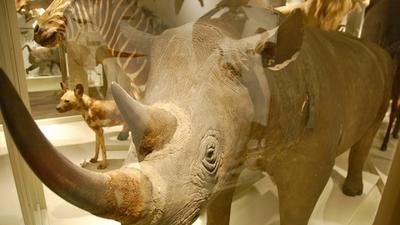 Visitors can see impressive mounted specimens of African wildlife collected over a century ago, including a hippopotamus, lion, ostrich, hyena, gorilla, and a variety of rare animals from the island of Madagascar. An interactive video display highlights endangered species.
Visitors can see impressive mounted specimens of African wildlife collected over a century ago, including a hippopotamus, lion, ostrich, hyena, gorilla, and a variety of rare animals from the island of Madagascar. An interactive video display highlights endangered species.
Arthropods: Creatures That Rule
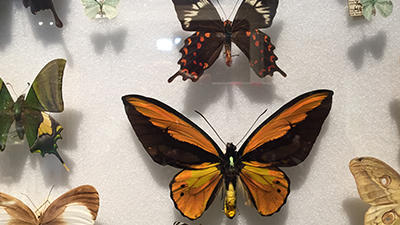 Featuring hands-on activities, dramatic specimen displays, colorful video and graphics, and even live specimens, this exhibition draws on the latest scientific research to explore arthropods' extraordinary evolutionary success and their impact on our lives.
Featuring hands-on activities, dramatic specimen displays, colorful video and graphics, and even live specimens, this exhibition draws on the latest scientific research to explore arthropods' extraordinary evolutionary success and their impact on our lives.
Asia
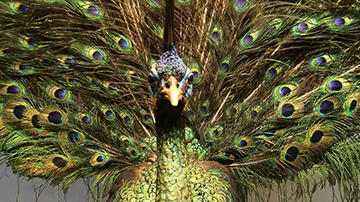 This gallery features mounted wildlife specimens from Asia. It includes a rare Indian rhinoceros, Siberian and Bengal tigers, and a cheetah.
This gallery features mounted wildlife specimens from Asia. It includes a rare Indian rhinoceros, Siberian and Bengal tigers, and a cheetah.
Birds of the World
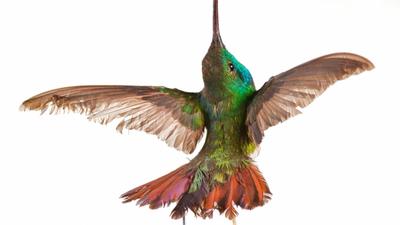 On the balcony encircling the museum's Great Mammal Hall, the Birds of the World gallery captures the extraordinary diversity of birds with many hundreds of stunning specimens that represent over 200 different bird families.
On the balcony encircling the museum's Great Mammal Hall, the Birds of the World gallery captures the extraordinary diversity of birds with many hundreds of stunning specimens that represent over 200 different bird families.
Cenozoic Mammals
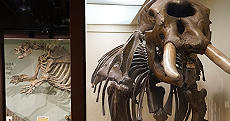 This gallery features fossils from the Cenozoic Era, also known as the Age of Mammals. It was marked by the extinction of dinosaurs 65 million years ago.
This gallery features fossils from the Cenozoic Era, also known as the Age of Mammals. It was marked by the extinction of dinosaurs 65 million years ago.
Central and South America
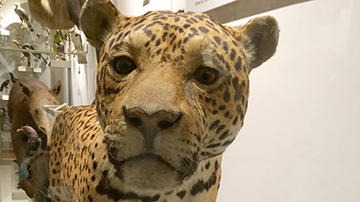 This gallery features mounted wildlife specimens from Central and South America. The exhibit includes a jaguar, tapir, sloth, giant armadillo, a large wall of hummingbirds, and a seven-foot Amazon pirarucu, one of the largest ever caught.
This gallery features mounted wildlife specimens from Central and South America. The exhibit includes a jaguar, tapir, sloth, giant armadillo, a large wall of hummingbirds, and a seven-foot Amazon pirarucu, one of the largest ever caught.
Climate Change
 Recently redesigned and updated, this exhibition draws on the latest scientific information about our warming climate, the global and local consequences, how to reduce fossil-fuel emissions that cause it, and how to prepare for its effects.
Recently redesigned and updated, this exhibition draws on the latest scientific information about our warming climate, the global and local consequences, how to reduce fossil-fuel emissions that cause it, and how to prepare for its effects.
Earth & Planetary Sciences
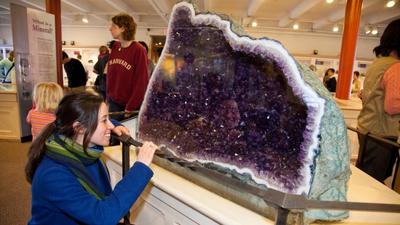 This expansive gallery displays thousands of rare rock and mineral specimens, sparkling gemstones, a 1,600-pound amethyst geode, meteorites, and much more about the processes and events that have shaped Earth's evolution.
This expansive gallery displays thousands of rare rock and mineral specimens, sparkling gemstones, a 1,600-pound amethyst geode, meteorites, and much more about the processes and events that have shaped Earth's evolution.
Evolution
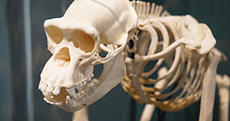 Evolution offers a behind-the-scenes look at ongoing evolution research at Harvard, from exciting new discoveries about human origins, to surprising insights from new genetic and developmental studies on Darwin's finches.
Evolution offers a behind-the-scenes look at ongoing evolution research at Harvard, from exciting new discoveries about human origins, to surprising insights from new genetic and developmental studies on Darwin's finches.
Glass Flowers
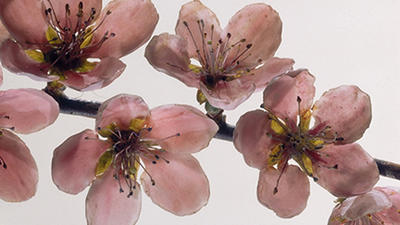 One of Harvard University’s most famous treasures is the internationally acclaimed Ware Collection of Blaschka Glass Models of Plants, better known as the “Glass Flowers." This unique collection was made by Leopold (1822-1895) and Rudolf Blaschka (1857-1939), a father and son team of Czech glass artists. Over fifty years, from 1886 through 1936, the Blaschkas produced 4,300 glass models that represent 780 plant species.
One of Harvard University’s most famous treasures is the internationally acclaimed Ware Collection of Blaschka Glass Models of Plants, better known as the “Glass Flowers." This unique collection was made by Leopold (1822-1895) and Rudolf Blaschka (1857-1939), a father and son team of Czech glass artists. Over fifty years, from 1886 through 1936, the Blaschkas produced 4,300 glass models that represent 780 plant species.
Great Mammal Hall
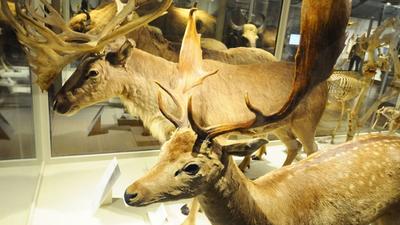 The Great Mammal Hall, an expansive two-story space, is the most dramatic gallery in the museum. It displays a large selection of mammals from a full-size giraffe and whale skeletons suspended from the ceiling to the smallest of creatures. The second-story balcony houses the Birds of the World exhibit.
The Great Mammal Hall, an expansive two-story space, is the most dramatic gallery in the museum. It displays a large selection of mammals from a full-size giraffe and whale skeletons suspended from the ceiling to the smallest of creatures. The second-story balcony houses the Birds of the World exhibit.
In Search of Thoreau’s Flowers: An Exploration of Change and Loss
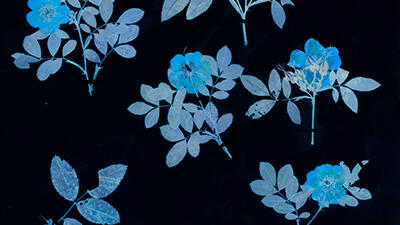 In Search of Thoreau’s Flowers: An Exploration of Change and Loss is an immersive multidisciplinary experience that marries art and science through a modern artistic interpretation of Henry David Thoreau’s preserved plants.
In Search of Thoreau’s Flowers: An Exploration of Change and Loss is an immersive multidisciplinary experience that marries art and science through a modern artistic interpretation of Henry David Thoreau’s preserved plants.
Marine Life
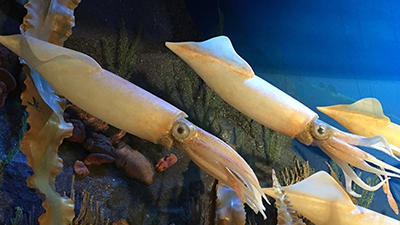 This exhibit immerses visitors in the remarkable diversity and dynamic interplay among animals in marine communities just off New England shores.
This exhibit immerses visitors in the remarkable diversity and dynamic interplay among animals in marine communities just off New England shores.
New England Forests
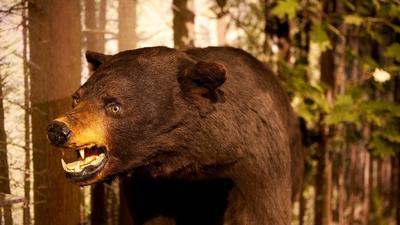 New England Forests in the Zofnass Family Gallery is a multi-media exhibition that explores the natural history and ecology of this region’s forests.
New England Forests in the Zofnass Family Gallery is a multi-media exhibition that explores the natural history and ecology of this region’s forests.
Orb-Weavers
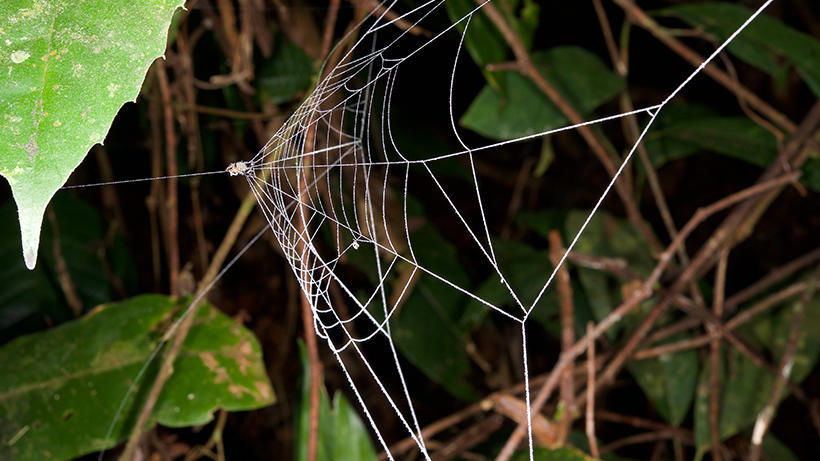 This smaller-scale exhibit in the Arthropods gallery examines the evolution of the orb spider web and explores how capture strategies used by its arachnid builders have shaped orb web design.
This smaller-scale exhibit in the Arthropods gallery examines the evolution of the orb spider web and explores how capture strategies used by its arachnid builders have shaped orb web design.
The Blaschkas at the Microscope: Lessons in Botany
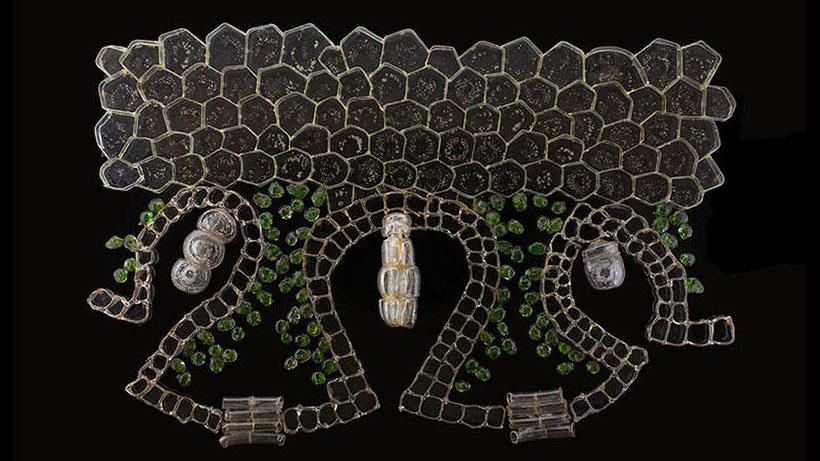 The Blaschkas at the Microscope: Lessons in Botany is a new Glass Flowers exhibition that delves into captivating educational models that meticulously illustrate the life cycles of non-flowering, spore-forming plants and fungi.
The Blaschkas at the Microscope: Lessons in Botany is a new Glass Flowers exhibition that delves into captivating educational models that meticulously illustrate the life cycles of non-flowering, spore-forming plants and fungi.
The Rockefeller Beetles
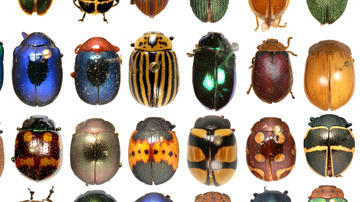 This smaller-scale exhibit in the Arthropods gallery features hundreds of specimens from banker and philanthropist David Rockefeller’s collection and recounts the story of a man whose childhood pursuit grew into a lifelong passion.
This smaller-scale exhibit in the Arthropods gallery features hundreds of specimens from banker and philanthropist David Rockefeller’s collection and recounts the story of a man whose childhood pursuit grew into a lifelong passion.
Romer Hall of Vertebrate Paleontology
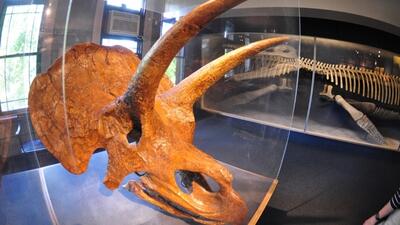 This exhibition showcases the evolutionary history of vertebrates, including spectacularly preserved fishes, dinosaurs, and early mammals.
This exhibition showcases the evolutionary history of vertebrates, including spectacularly preserved fishes, dinosaurs, and early mammals.
Sea Creatures in Glass
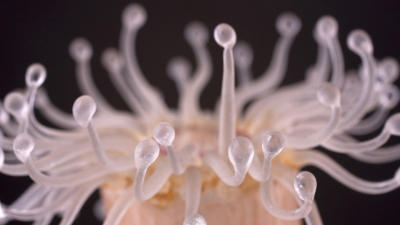 Many years before they were commissioned by Harvard University to make the renowned Glass Flowers, father and son artists Leopold and Rudolf Blaschka meticulously shaped glass into lifelike models of marine and terrestrial animals for universities and museums throughout the world in the nineteenth century.
Many years before they were commissioned by Harvard University to make the renowned Glass Flowers, father and son artists Leopold and Rudolf Blaschka meticulously shaped glass into lifelike models of marine and terrestrial animals for universities and museums throughout the world in the nineteenth century.
Swimming with Sharks: A Deep Dive into Shark Biology and Behavior
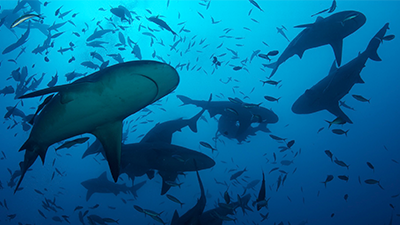 In this remarkable exhibition, discover why the most massive sharks prey on some of the ocean’s smallest critters. Learn how to decipher dietary clues from jaws preserved in Harvard’s world-class collections. Explore how miniature teeth on shark skin help them move efficiently through water.
In this remarkable exhibition, discover why the most massive sharks prey on some of the ocean’s smallest critters. Learn how to decipher dietary clues from jaws preserved in Harvard’s world-class collections. Explore how miniature teeth on shark skin help them move efficiently through water.
Online Exhibitions
Face to Face
 This exhibit showcases Jana Matusz's striking portraits of animal specimens, in which the use of color and texture gives a voice and life to them.
This exhibit showcases Jana Matusz's striking portraits of animal specimens, in which the use of color and texture gives a voice and life to them.
What's in a Name?
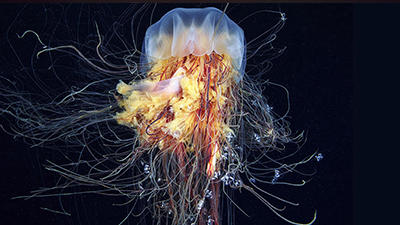 This exhibit includes four interactive kiosks embedded into existing exhibits. Explore how different organisms are named. Learn more on the What's in a Name website and download the free e-book.
This exhibit includes four interactive kiosks embedded into existing exhibits. Explore how different organisms are named. Learn more on the What's in a Name website and download the free e-book.
Vida salvaje/Wild Life
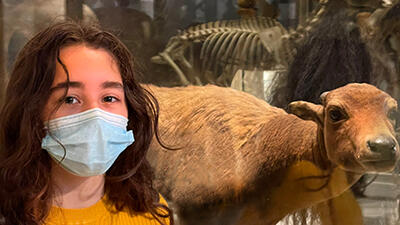 Listen to ten audio reflections recorded, edited, and produced by the Hear Me Out/Escúchame
Listen to ten audio reflections recorded, edited, and produced by the Hear Me Out/Escúchame
teens. Learn more about why some of the animals on display in the Harvard Museum of Natural History are important to us.
Escucha diez reflexiones grabadas, editadas y producidas por jóvenes del proyecto Hear Me Out/Escúchame. Descubre por qué algunos de los animales en el Museo de Historia Natural de Harvard son importantes para nosotros.

